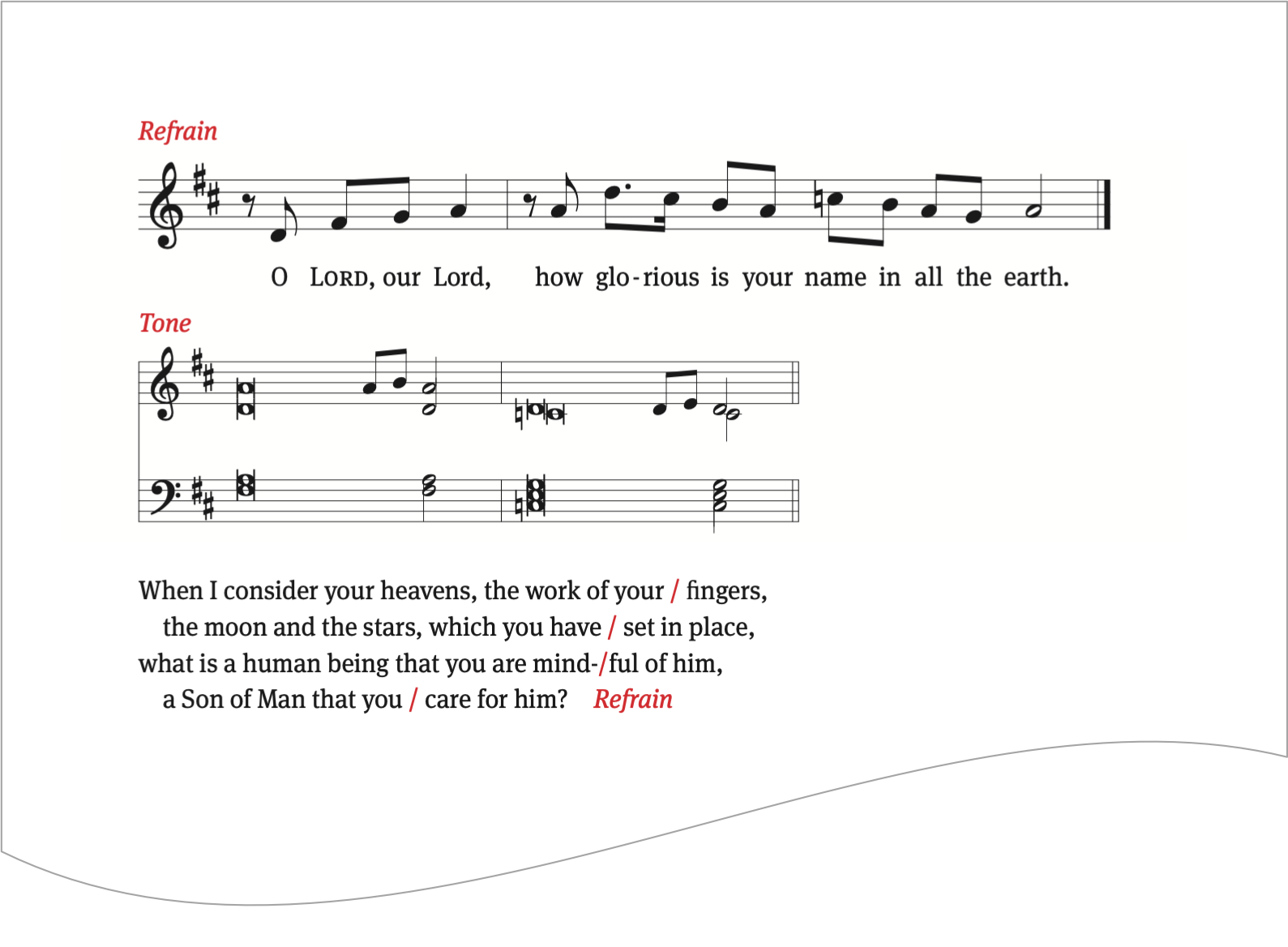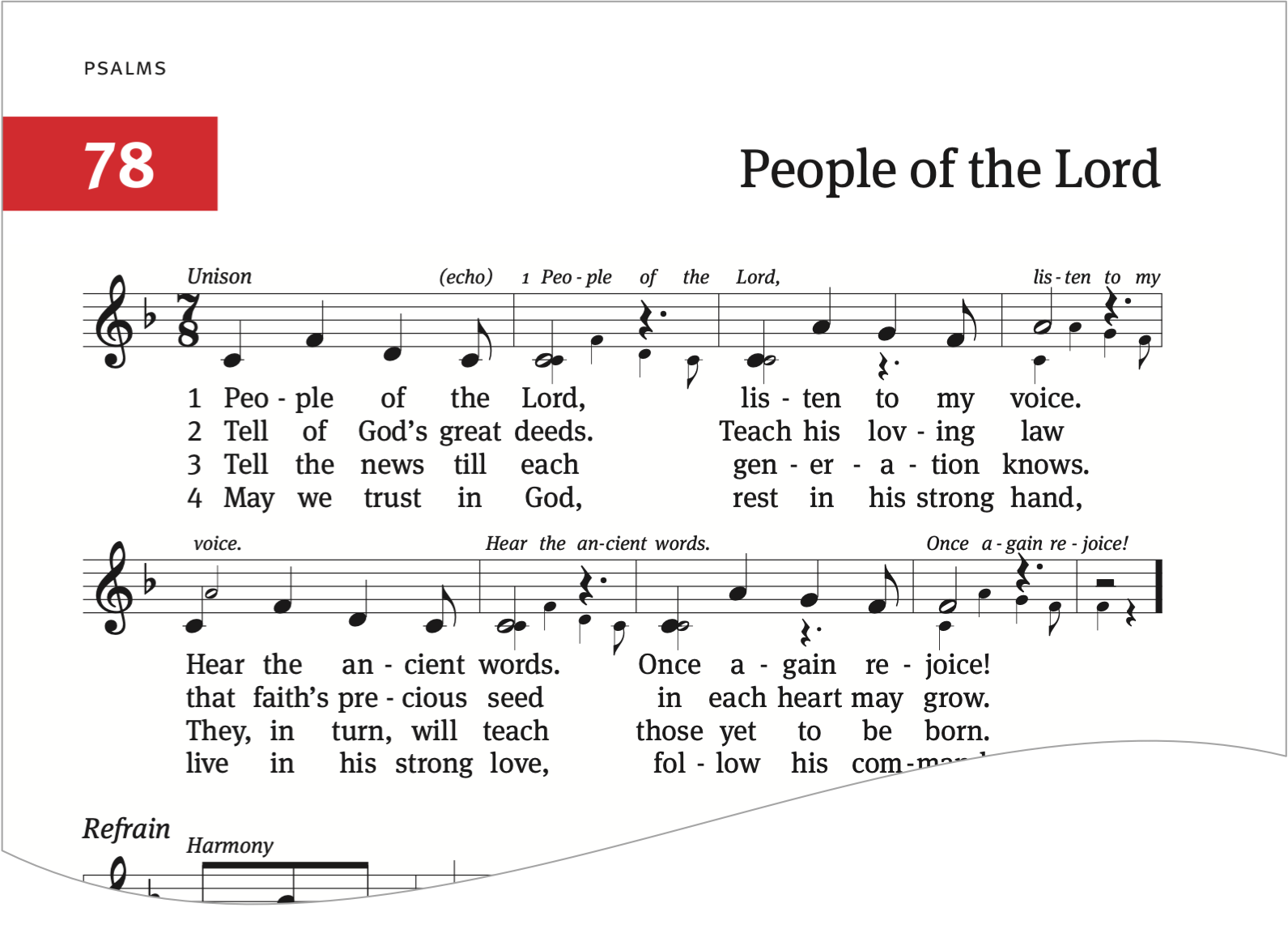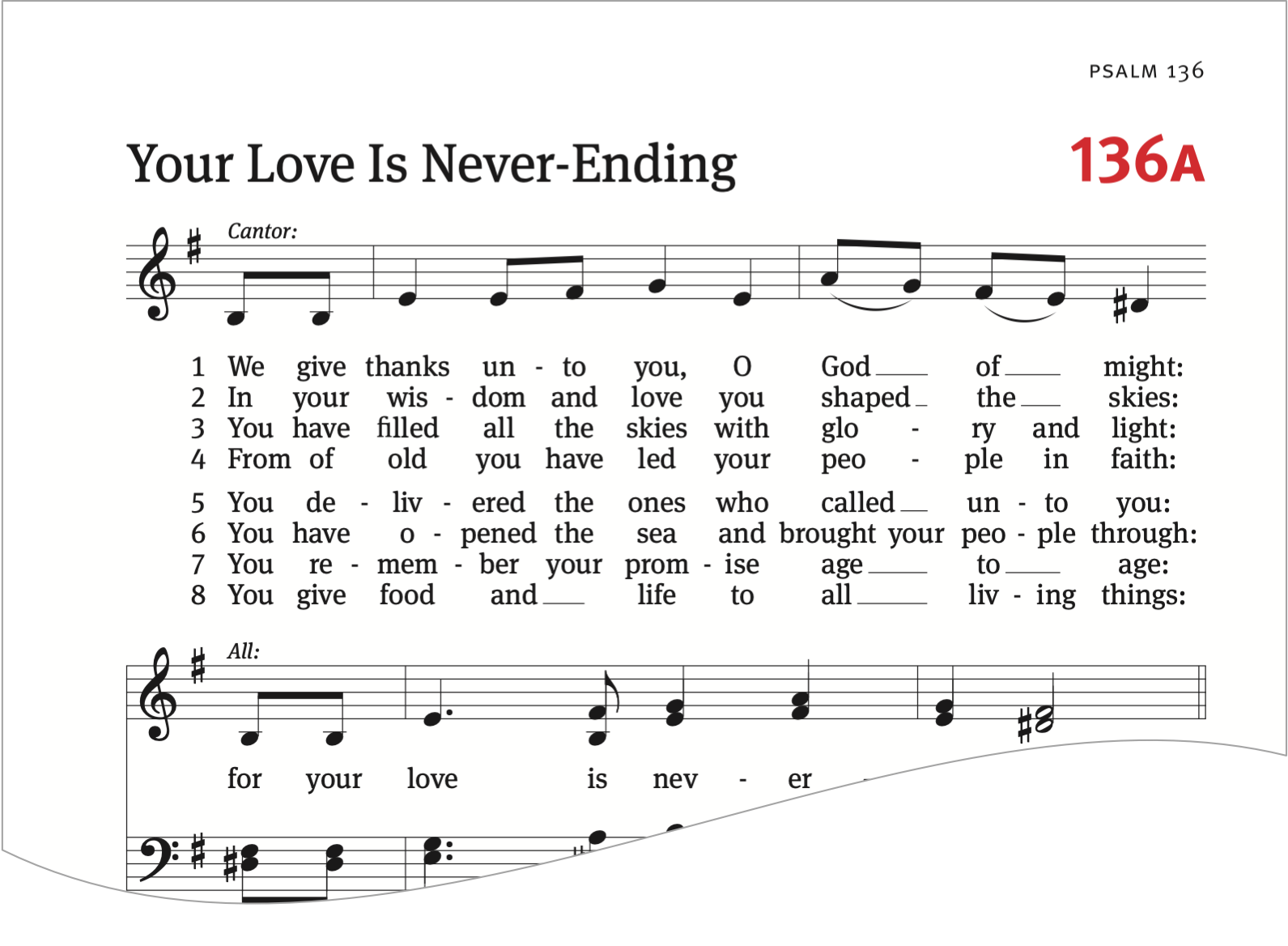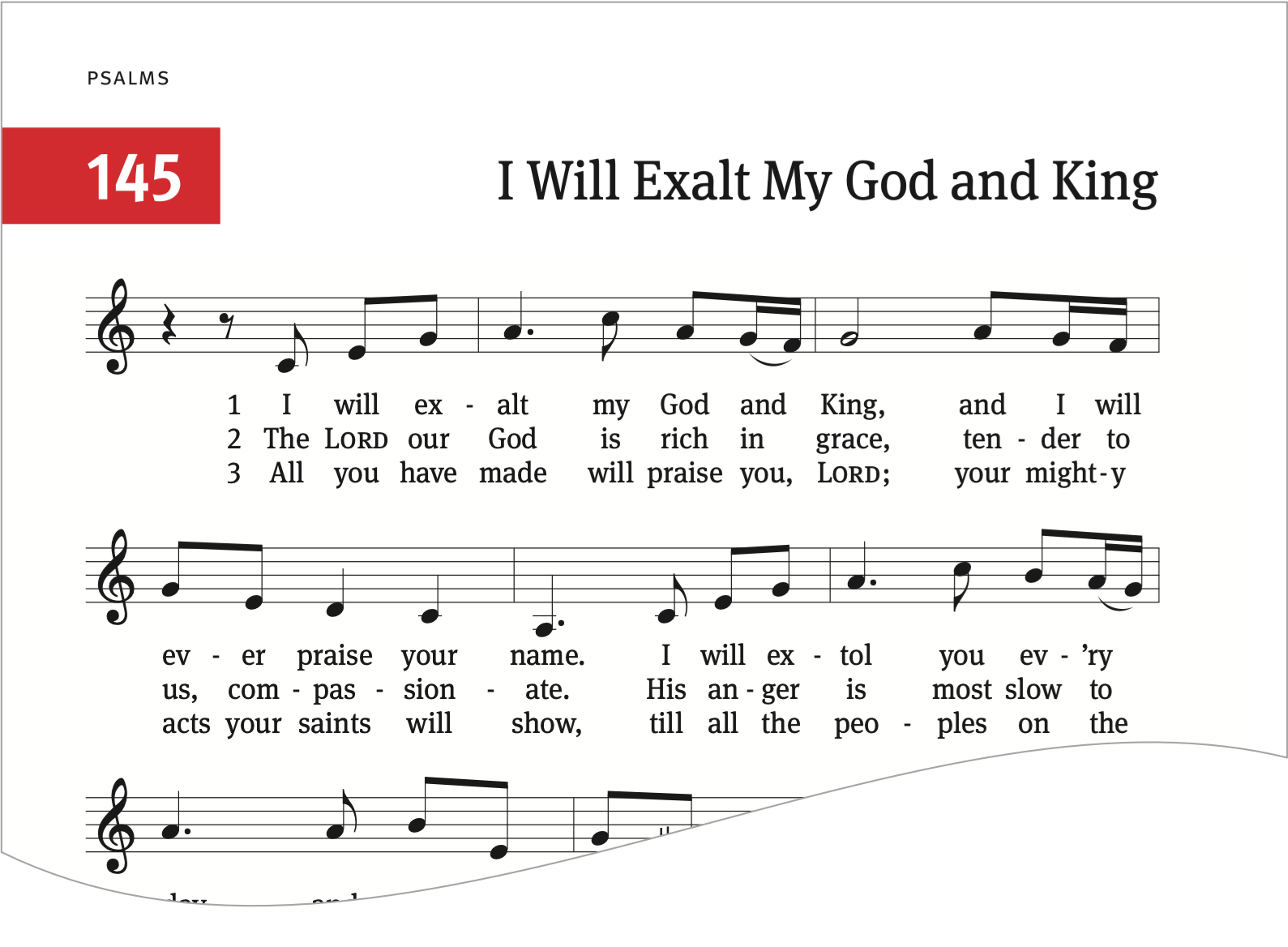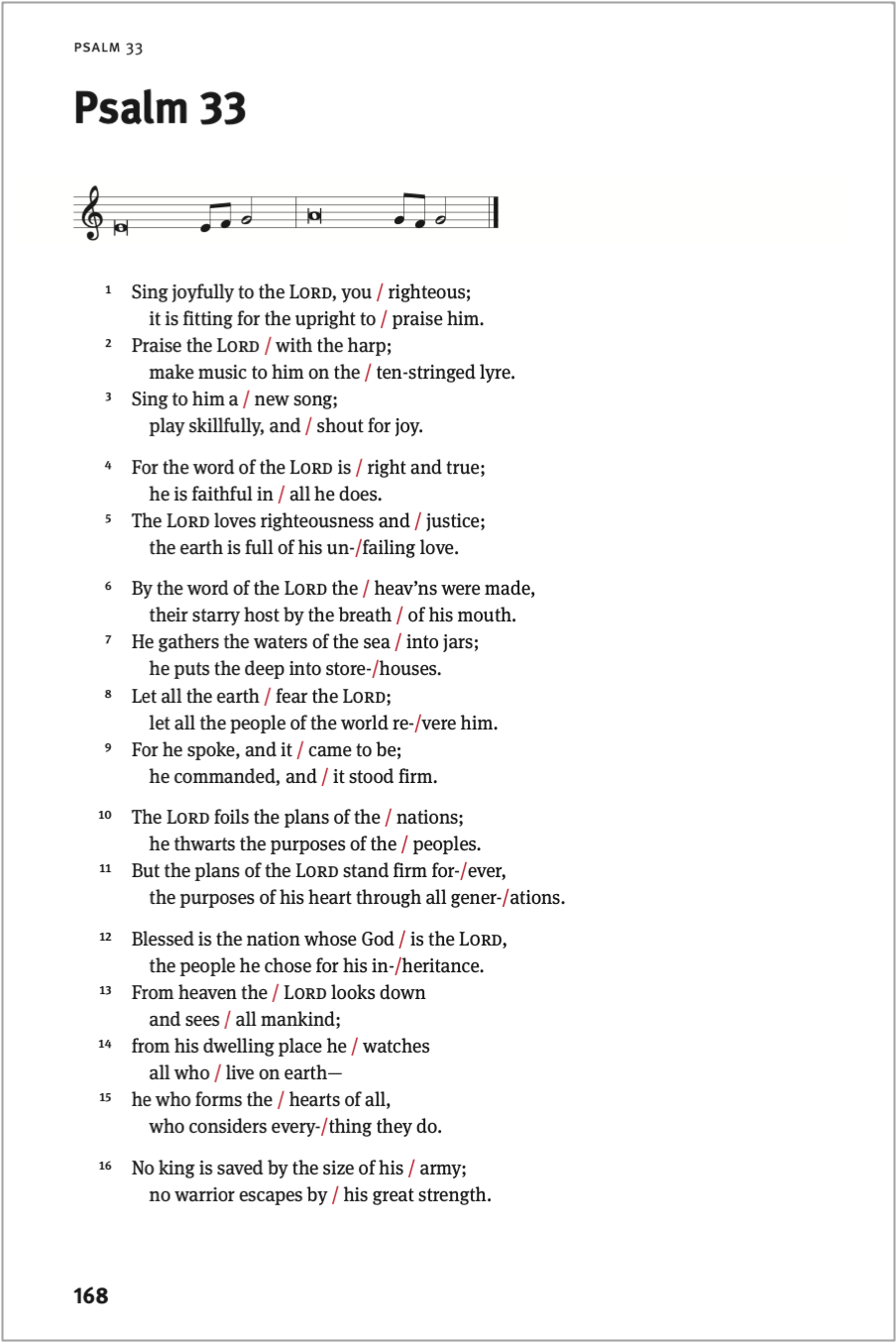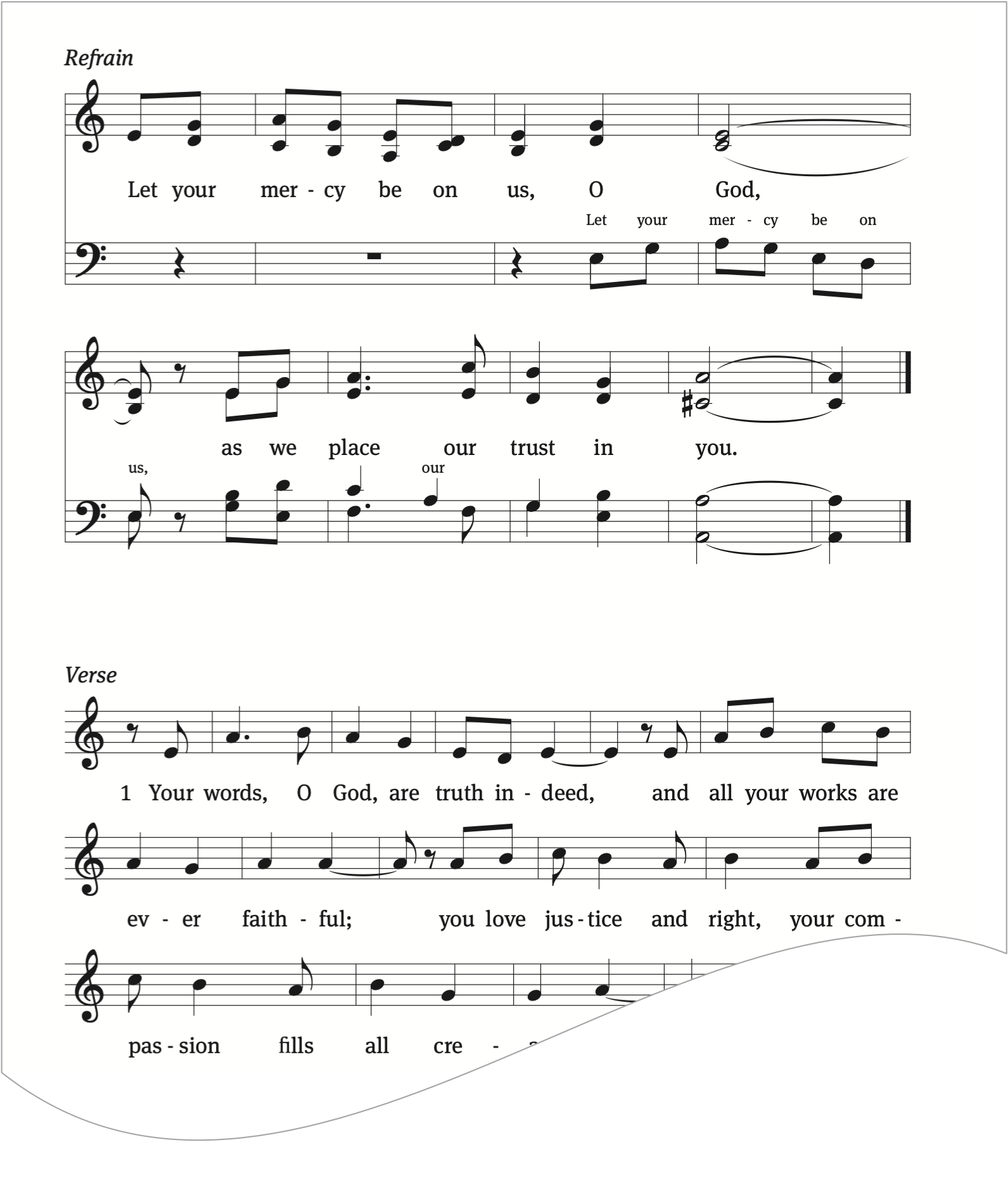PREVIEW
New Psalter Preview Available for Download
The WELS Hymnal Project has prepared a new, in-depth preview of Christian Worship: Psalter. The Psalter Preview includes samples of two dozen settings available in the upcoming volume. Download a copy to your device.
NOW AVAILABLE
Video Introductions
Learn about the benefits of psalmody in congregational worship as well as in use at home.
Congregations that enjoy the current hymnal’s psalm style will be able to find something for every service. Congregations that prefer metrical paraphrases or more lyrical settings will be able to find something as well. Each of the psalms appointed in the lectionary has a setting in the new hymnal. Alternate settings are available in the electronic resources. This Preview gives you a sample of those settings.
Settings for all 150 psalms are available in Christian Worship: Psalter. This new resource provides accessible settings for individuals, choirs, and congregations to chant or sing all 150 psalms. Psalter settings for Psalm 33 are provided in this Preview.
The new Psalter has a basic pattern. Each psalm is printed in its entirety and is pointed to be chanted in the current style with familiar chant tones provided. A psalm prayer is followed by both an explanation of how the Church has used that psalm through the ages and then commentary on that particular psalm from a fresh translation of Martin Luther. The settings follow, representing treasures old and new.
Every psalm in the Psalter has a setting in a responsorial style, familiar to WELS congregations. In addition, all psalms have settings in metrical paraphrases, which look like hymns. Many of the tunes are new to WELS. Some of them are from the previous WELS hymnal but are not in the current hymnal. Almost all of them are printed in singable and playable four-part harmony. Many of the psalms have additional lyrical settings with melodies that will stay in the ear.
Shout for joy to the Lord, all the earth.
Worship the Lord with gladness; come before him with joyful songs.
Psalm 100:1,2
Responsorial Psalms
The responsorial style is a familiar one. The melody of the Psalm 23 refrain (MOORLOUGH SHORE; below) is also known by the name THE SALLEY GARDENS. The full tune will be used for one of the hymns in the hymnal pew edition. An excerpt of that tune provides a fresh and pastoral musical setting for the refrain line of this well-loved psalm.
Slashes have been chosen to mark the cadence. When printed in black and white, the slash is still a distinctive mark. This mark assists worshipers with color blindness to distinguish the cadence.
About 80 percent of the psalms printed in the hymnal are in this familiar responsorial format. Several other psalm formats will appear in the hymnal pew edition, as demonstrated in the following pages of this Preview. A new book entitled Christian Worship: Psalter will have all 150 psalms set in a wide variety of formats.
-
Red tabs create a visible marker on the edge of the hymnal, making it fast and easy for worshipers to locate the psalms section.
-
Four-part harmony is provided for all psalm tones.
-
Red slashes indicate the cadence (musical shift) at the end of each line.
A well-known liturgical song based on Psalm 8 (above) provides a very familiar and sturdy refrain
Melodic Folk Tunes
Tens of thousands of musical settings for the psalms exist. The Psalmody Committee reviewed literally thousands of them. Psalm settings come in a wide variety of musical styles. This version of Psalm 63 makes use of an Irish folk tune for three paraphrased verses and adds a refrain to emphasize one of the main themes of the psalm.
The modern setting here has a catchy rhythm—a rhythm that may be more easily learned by performance than by counting. It’s the kind of music that worshipers will want to practice and repeat a few times when first getting familiar with it. Introduction and assistance from cantors or a choir will be helpful. Note how the verses are sung in unison, while the refrain may be sung in parts. This modern psalm setting may be led by organ or played by piano/guitar/ensemble.
Call and Response
Minister, cantor, or choir can sing the verses of Psalm 136 below, with the assembly singing the response. Of course, call and response singing can be carried out in a number of different ways based on local preference and resources.
-
This psalm, like many others offered, works naturally in call and response format.
-
All metrical psalms include a note indicating the associated hymn tune and meter for useful cross-referencing with associated tune resources.
-
In Christian Worship: Psalter (above) the lectionary psalms are indicated with a red number and letter.
Metrical Paraphrase
A metrical paraphrase renders the words of psalm verses into rhymed meter. Metrical psalms are sung like hymns. We already know a number of such psalms from our past hymnals: “Oh, Bless the Lord, My Soul” is a metrical paraphrase of Psalm 103 and “O God, Our Help in Ages Past” is a metrical paraphrase of Psalm 90. On this page we have the cathedral tune JERSUALEM carrying the royal text of Psalm 145.
ADDITIONAL VOLUME
Christian Worship: Psalter
Christian Worship: Psalter is a self-standing volume that includes the full texts of all 150 psalms. Like the hymnal pew edition, this volume will have broad usage possibilities, from individual devotional use to placement in church pews next to the hymnal. Greatly expanding on the 62 psalm settings offered in the hymnal pew edition, Christian Worship: Psalter will have approximately 450 psalm settings, an average of three musical settings per psalm.

The entire set of psalms available in Christian Worship: Psalter will be offered for use in Christian Worship: Service Builder.
The full texts of all 150 psalms are printed with pointing for recitation or chanting according to a familiar tone.
Responsorial and Metrical Paraphrases
Every psalm will have at least two musical settings in the Psalter. One of the two will be a responsorial setting (Psalm 33a), and the other, a metrical paraphrase (Psalm 33b). This minimum level of stylistic variety ensures that congregations will have psalmody options that match their musical resources and local customs.
-
Worshipers will delight to hear familiar psalm refrains retained from the current hymnal.
-
This is an example of a psalm with a double tone; instead of two, there are four musical phrases for the chanted verses.
Lyrical Verses with Refrains
Psalm settings commonly appear with a refrain and lyrical verses. This format allows for a great deal of variety based on each congregation’s available resources. A cantor or small group may sing the verses, with the assembly singing the refrain. The choir can add harmony to the refrain. Over time, in some congregations, the entire assembly may learn to sing the verses as well.
-
Several psalms include refrains that can be sung in four-part harmony.
-
Lyrical verses benefit from cantor or choir leadership but may also be learned over time by an entire congregation.


